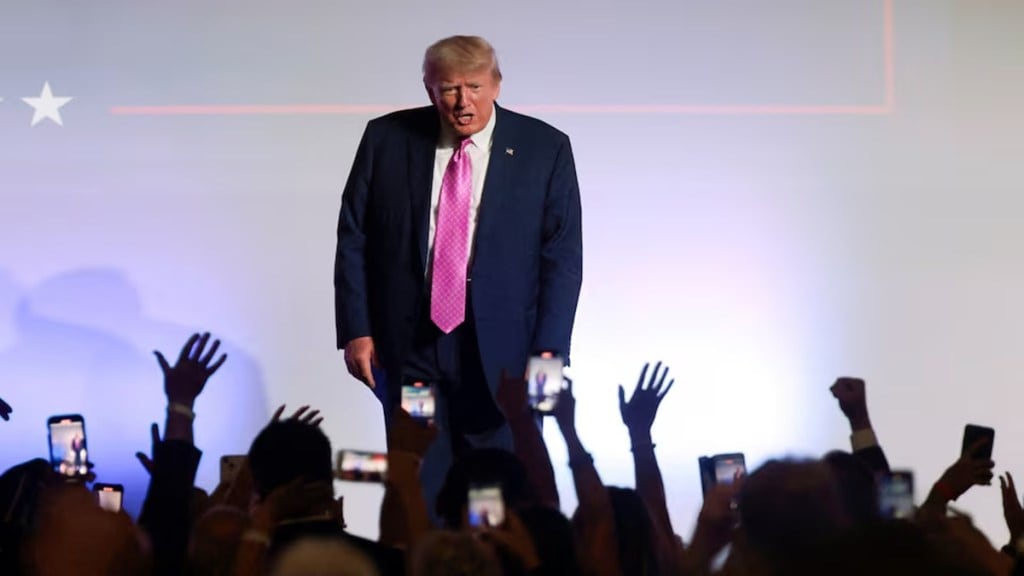By KJ Joseph
Donald Trump imposed reciprocal tariff on April 2, making the World Trade Organization (WTO) redundant. There was consensus on decline in trade and investment setting the stage for a third global recession — after 2007 and the pandemic — with catastrophic consequences for less developed countries, and the US predicted to take the hardest hit. Although the tariff was suspended for 90 days for all but China, uncertainty is at its peak. The unequal, unsustainable world inherited from four decades of globalisation has become unpredictable. The moot question is the role of globalisation — orchestrated at the instance of WTO — in US concerns and the lessons that the tariff episode offers for the future of globalisation.
Trump argued that the lack of reciprocity in bilateral trade ties, disparate tariff rates, and non-tariff barriers had led to the US’ large trade deficit ($1.23 trillion) accounting for about 4.5% of GDP. The most favoured nation (MFN) tariff rates under globalisation were arrived at after the Uruguay Round (1986-1994). But Trump observed that under the WTO, the US holds the lowest simple average MFN tariff rates of 3.3%, which are much higher for key trading partners like Brazil (11.2%), China (7.5%), European Union (5%), India (17%), and Vietnam (9.4%). These partners also suppress domestic wages and consumption, hampering demand for US exports, while artificially increasing their global competitiveness.
This hollowed out the US manufacturing base that undermined critical supply chains and made the defence-industrial base dependent on adversaries. US share in global manufacturing output fell from 28.4% in 2001 to 17.4% in 2023; the share of US manufacturing in GDP stood at 11% in 2023. During 1997-2024, the US lost around five million manufacturing jobs. For Trump, the future of American competitiveness depends on reversing these trends as manufacturing is the engine of innovation responsible for 55% of US patents and 70% of R&D spending.
While Trump blames lack of reciprocity in bilateral trade ties, a careful enquiry hints at unbridled globalisation driven by private profit.
Trade between the Global North and Global South is governed by their comparative advantage and specialisation in production. Prior to globalisation, new products originated in the Global North, notably the US, thanks to a comparative advantage in knowledge production, the key resource for high-tech products. Having only one or a few producers they enjoyed monopoly power and thus acted as price makers. For example, when Reynolds introduced the ballpoint pen in 1945, it was priced at $12.95 ($200 at current prices). Producers of such goods could afford high wages, retain high profits, and paid high tax revenue to the government.
As the product matured, the production base shifted to the Global South, often at the instance of MNCs from the North and also local firms. Increased scale backed by higher demand and cheap labour led to low production cost and exports to the North. The producers are no more price makers but price takers. Given the abysmally low price, the products attract low or no tariff in the North and the consumers benefit. Developing countries are also better off due to employment opportunities. Being price takers, their wages and profits are at a lower level which explain their lower per capita income. Meanwhile, countries in the North come up with newer products enabling them to maintain higher per capita income.
Unbridled globalisation disrupted the status quo. With global production networks, knowledge production was also globalised through innovation networks thanks to profit-driven MNCs. As a result, R&D investment by US MNCs in China grew 13.6% during 2003-17 as against 5% in the US. Since 1990, China’s R&D investment increased more than fourfold to reach nearly 2.5% of GDP. The absolute amount spent on R&D by China is nearly nine times that of South Korea. China also launched strategic initiatives like Chunhui to attract non-resident Chinese scholars and address brain drain. As a result, the South (read China) emerged as a major player in manufacturing new products threatening the monopoly of North (read US). The US share in global merchandise export declined from 11% in 1980 to 8.5% in 2023, while that of China rose from 0.8% to 14% as it led high-tech exports.
India, which has over 1,300 global capability centres engaged in R&D for largely US MNCs, adheres religiously to the WTO’s TRIPS and TRIMS agreements. Unlike China, India’s R&D reduced from about 0.8% of GDP in the early ’90s to 0.64%. India emerged as the largest supplier of highly skilled manpower for the US. Although it announced Make in India, its share of manufacturing GDP fell, and does not compete with the US in high-tech exports. The US plight would have been much worse had India followed the China way.
The tariff episode hints at wrong diagnosis and prescription. It reinforced the general view that globalisation is at a crossroads. Nobel laureate Joseph Stiglitz and reputable scholars like Deepak Nayyar have already argued for governing globalisation along with reforming institutions that laid its foundation. America’s declining innovation capability, increasing trade deficit, fractured value chains, and falling manufacturing output and employment cannot be delinked from the behaviour of its MNCs whose prime concern is profit, not national security or sovereignty. The state cannot afford to be in the backseat any more. Instead, there is a need to guide, regulate, and govern the market to ensure capability building at all levels for national interest. While there are challenges in the tariff episode, reforming globalisation would provide rich dividends.
The writer is director, Gulati Institute of Finance and Taxation, and secretary general, Globelics.
Disclaimer: Views expressed are personal and do not reflect the official position or policy of FinancialExpress.com. Reproducing this content without permission is prohibited.

